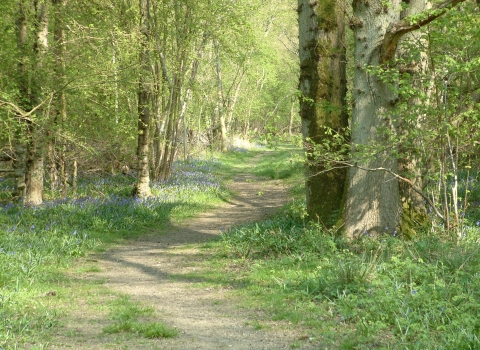In May 2018, the Chequered Skipper butterfly, extirpated from England in 1976, was reintroduced to Rockingham Forest in Northamptonshire by Butterfly Conservation as part of ‘Back from the Brink’—a mammoth collaboration between 7 conservation organisations which aims to save 20 species from extinction and benefit over 200 more through 19 projects across England. The ‘Roots of Rockingham’ project — led by Butterfly Conservation and to which the Chequered Skipper reintroduction belongs — can count the Wildlife Trust BCN amongst its delivery partners, which also include Forestry England, Natural England and the Boughton Estate.
After the first donor population of Chequered Skippers sourced from the Fagne-Famenne region of Belgium was successfully translocated to Rockingham Forest in 2018, there was a degree of apprehension surrounding emergence of the first generation of ‘native’ (the purists take issue with describing imported butterfly stock as such) English Chequered Skippers in 2019: we were unsuccessful in observing females lay eggs during the flight period or locating larvae in the aftermath of it, and therefore had no way of confirming that the release site was silently stocked with the immature offspring of Belgian females. Additionally, 2018's hot, dry summer—similar to the drought of 1976, which anecdotal, unsubstantiated evidence suggests was the death knell for the remnants of the historic English colonies—led to most of the release site drying up. For all the planning and graft that had gone into the project to that point, ultimately we could do nothing more than wait and see.
In early May 2019, a warm spell roughly coinciding with the earliest pane of the Chequered Skipper’s emergence window did not lead to sightings. Favourable weather deteriorated thereafter without a solitary glimpse of the scrappy golden-brown butterfly. Later in May however, good weather returned, and great relief was felt by all as David James (Northants County butterfly recorder) photographed the first English Chequered Skipper on the wing for 43 years! All unease now diffused, a mass influx of adult ‘CS’ soon followed, and a squadron of volunteers descended on the release site—volunteers which would go on to donate in excess of 400 combined hours of surveying time in the ensuing weeks as they collected timed count data on the Chequered Skipper, other butterflies and taxa from their individually assigned routes.
I, meanwhile, have a different, more autonomous agenda as a postgraduate researcher in Environmental Science at the University of Northampton. My PhD requires I undertake behavioural studies that will offer insight into the species’ ecology in its restored Rockingham Forest habitat, and I met this obligation in 2019 by observing Chequered Skippers going about their daily routines and making field recordings of over a dozen different variables (e.g. flight and nectaring duration) on a dictaphone as I did so. This oral data will be transcribed and analysed and ultimately enable us to describe the species’ traits and habitat preferences in England. After the 2019 flight period was over, my attention switched to vegetation surveys—of sward height, nectar and hostplant availability, as well as other ride features potentially important to all stages of the butterfly’s life-cycle. This habitat data will, in part, be compared to adult CS abundance: for example, if the butterfly transpires to be biased to areas where bugle Ajuga reptans (the species’ primary nectar source) or other flowering species are most prevalent, it could be a limiting factor to dispersal rates.
Adult male CS were observed territorially ‘lekking’ this year—scrapping it out for supremacy along tram lines created by recreational use—in one of a couple of activity hotspots. Males appear to prefer to establish territories (on grass blade perches which afford good visibility of surrounding habitat, passing females and encroaching invertebrates) in herb-rich grassland of shorter modal sward heights; an annually mown layer structurally divorced from mid-to-late successional ribbons of dense tussocks that the illusive females potentially spend more of their time fluttering amongst, which consequently makes them far harder to trace.
Despite our best efforts, we were again unable to directly observe females egg-laying during the 2019 flight period, however unlike last year, we have been successful on our larval hunts! Larvae have cropped up in a range of microhabitats which appear to have little in common structurally other than the species of hostplant chosen (Calamagrostis epigejos wood small-reed), and I suspect macronutrient concentrations in candidate grass blades play a key part in the female’s selection process.
These curiosities, amongst many others, will hopefully be demystified in the coming years. Thankfully, I have only just formally begun the second year of my studies, so time is on my side. The beauty of what I do is that every aspect of my research is a discovery—it is not every day that an extinct species of butterfly is reintroduced to a country, and I couldn’t be more thrilled to be a part of this project (arguably with the best role of all!) and I am incredibly grateful to the Butterfly Conservation and the University of Northampton for supporting my studies.
We would massively appreciate additional volunteers in 2020 and beyond to record sightings of Chequered Skippers alongside other butterfly species and taxa monitoring, so please contact me at jamie.wildman@northampton.ac.uk or Susannah O’Riordan (Project Officer, Roots of Rockingham) at soriordan@butterfly-conservation.org if you are interested in contributing to this historic project!
You can follow me on Twitter @jpwildman, and keep up to date with the latest on the Roots of Rockingham project here


